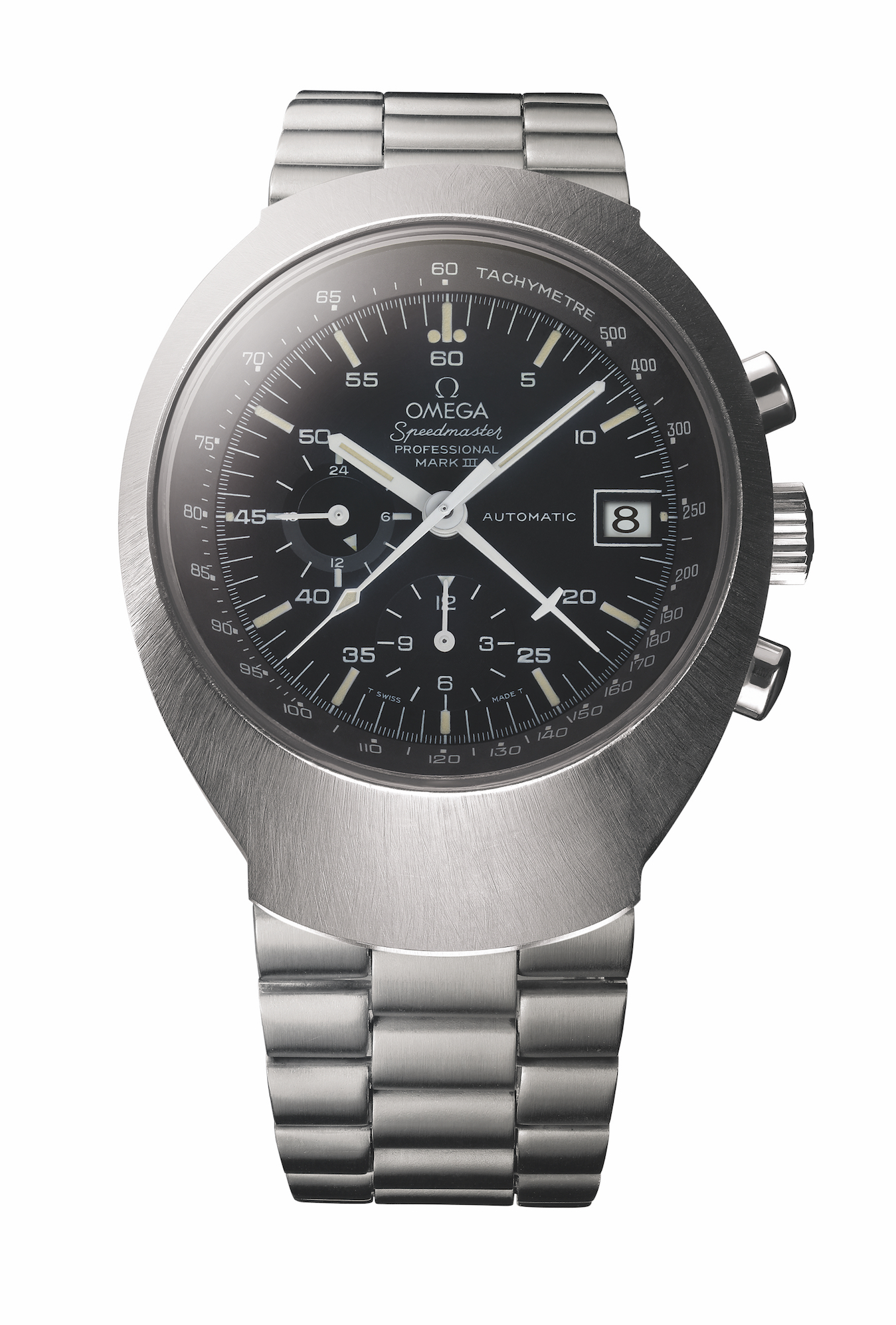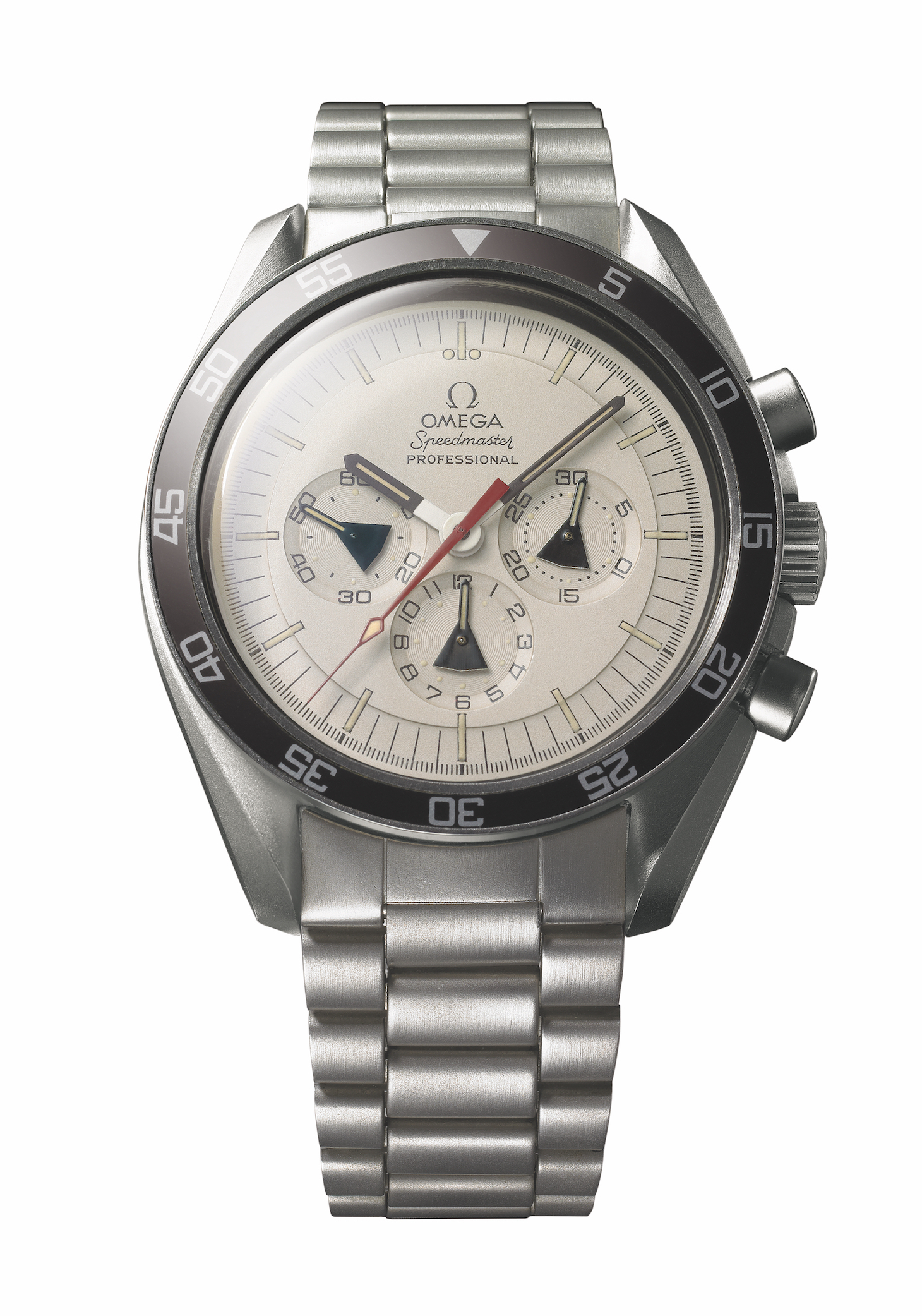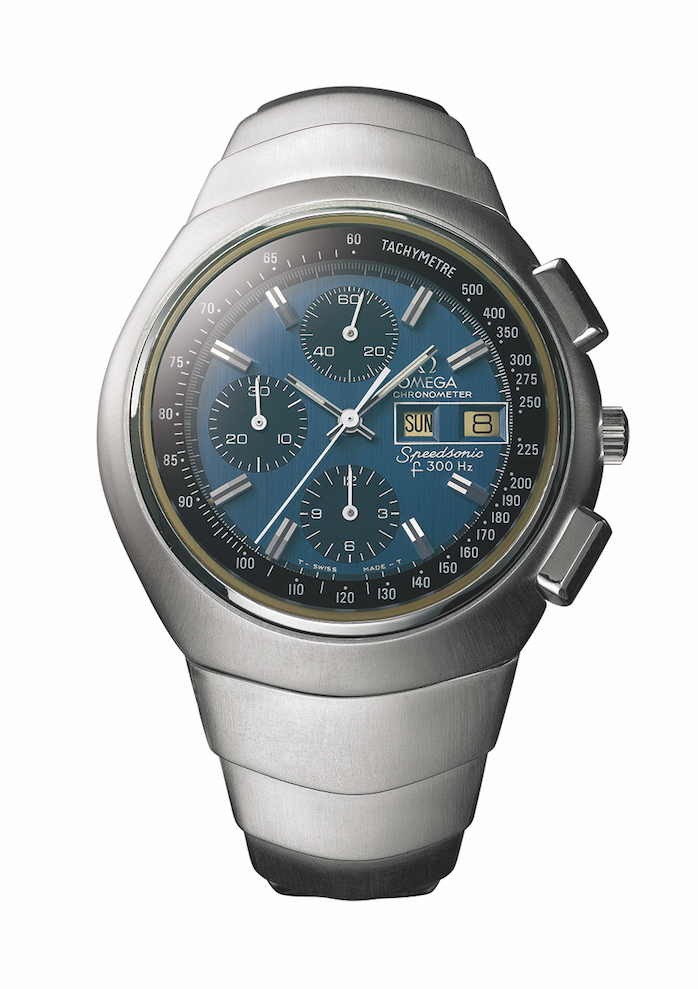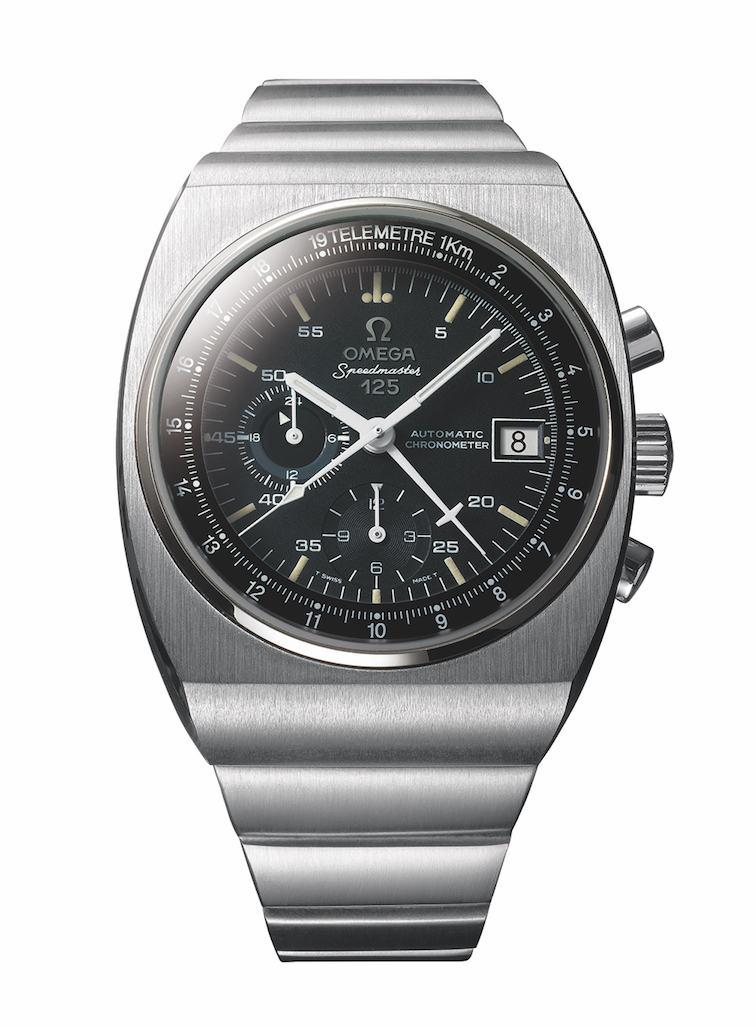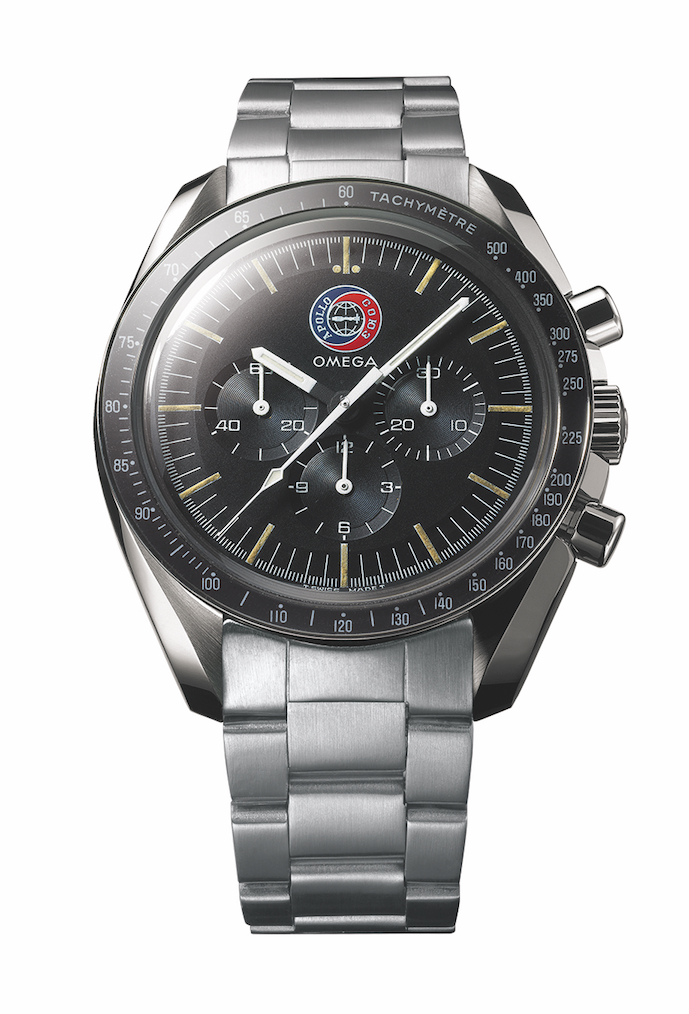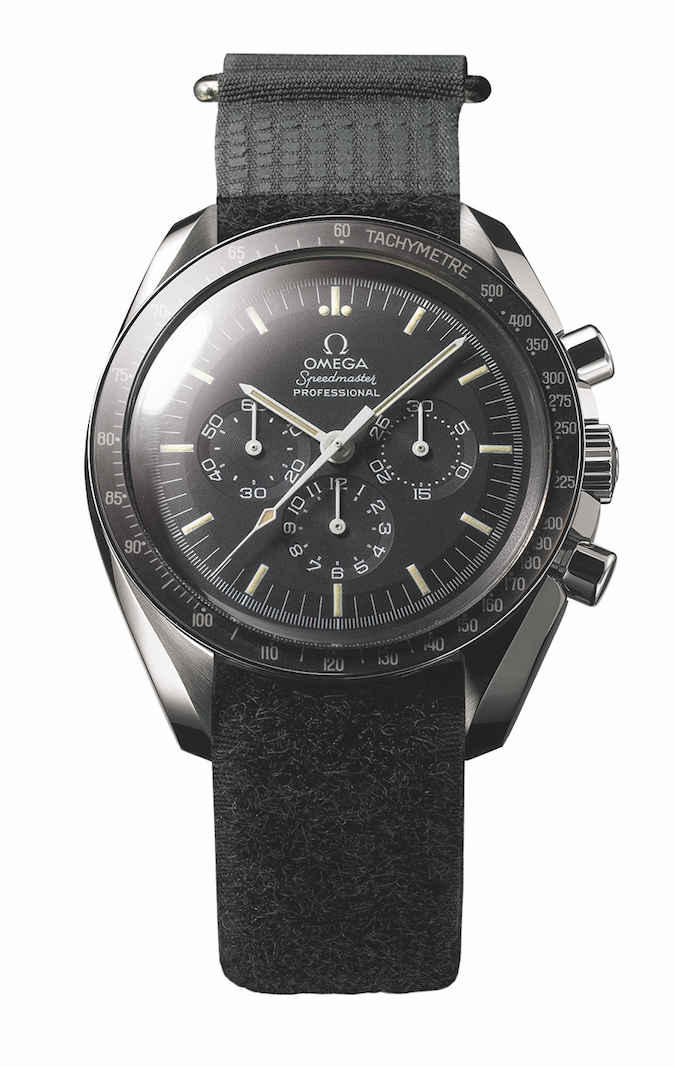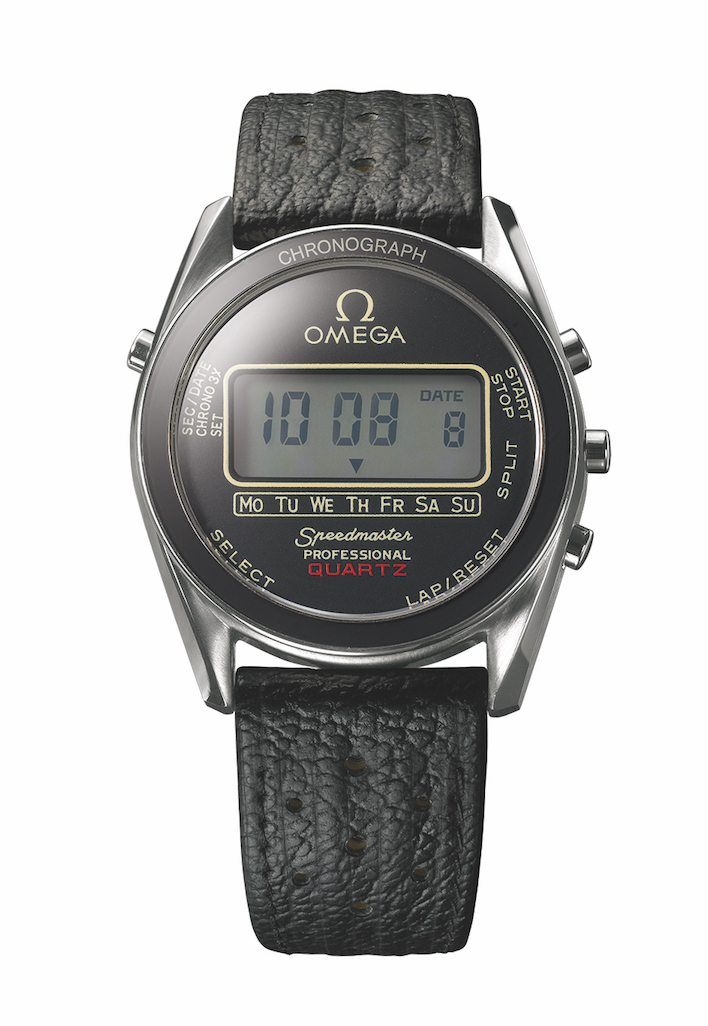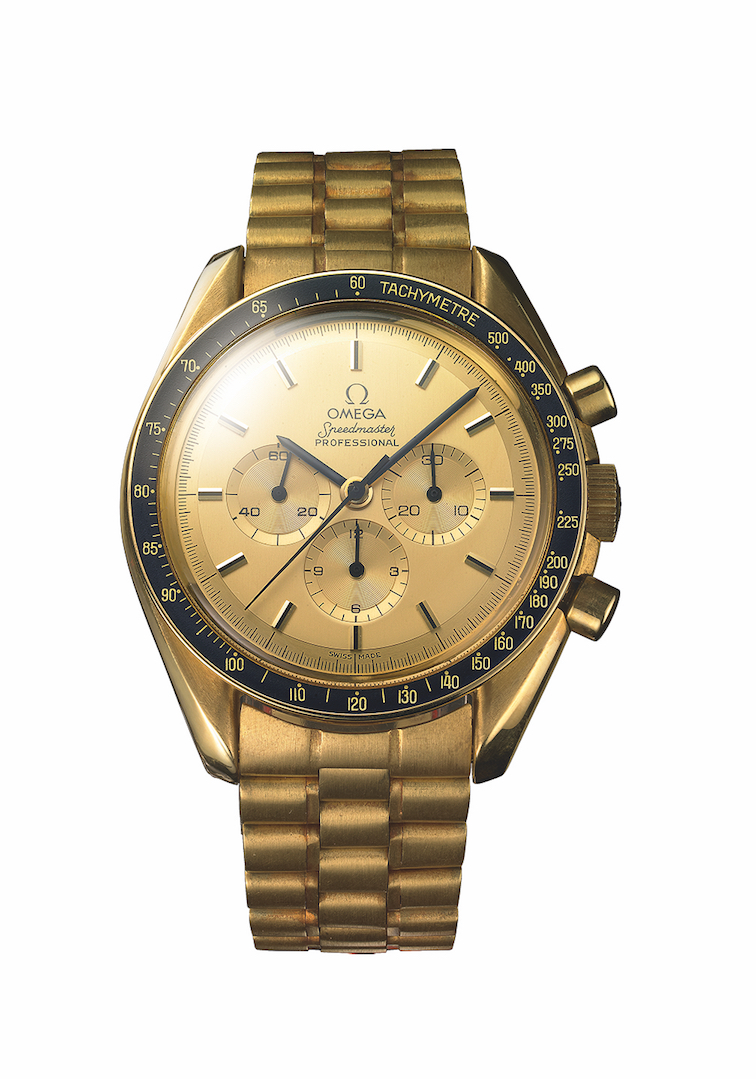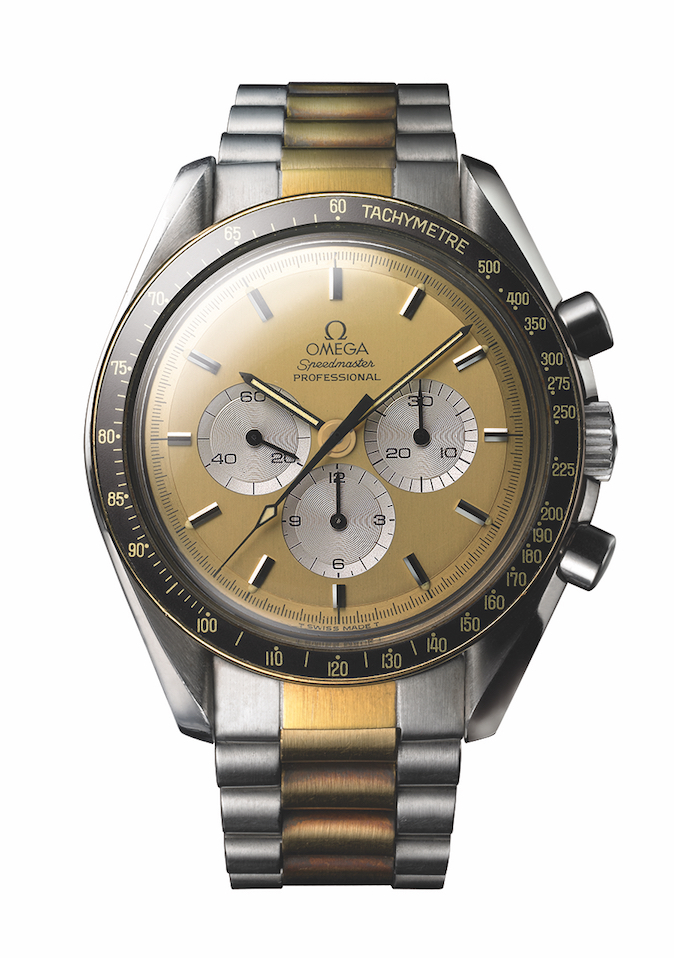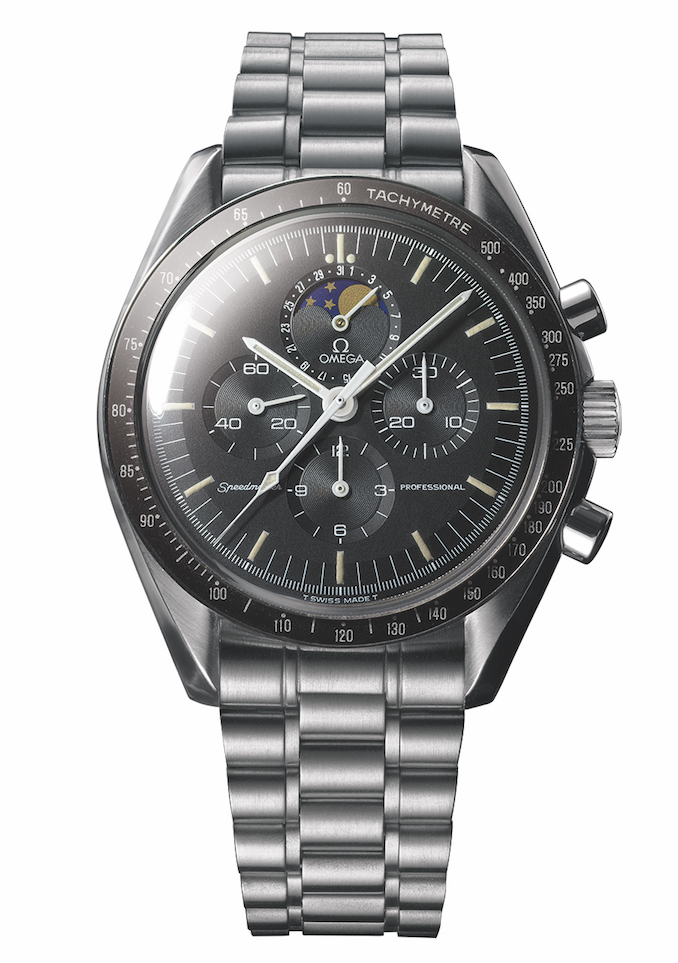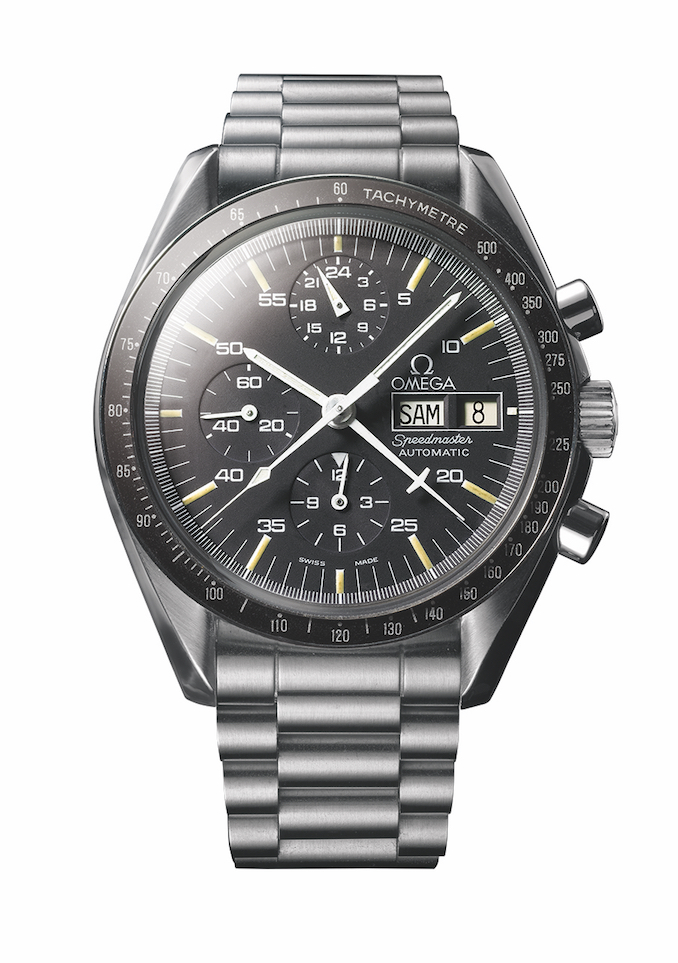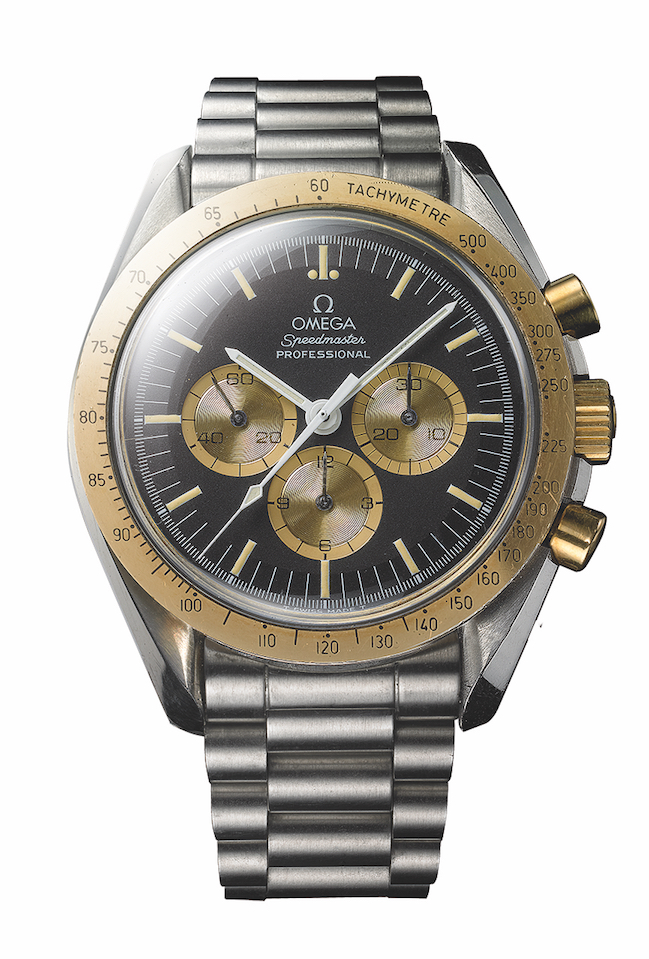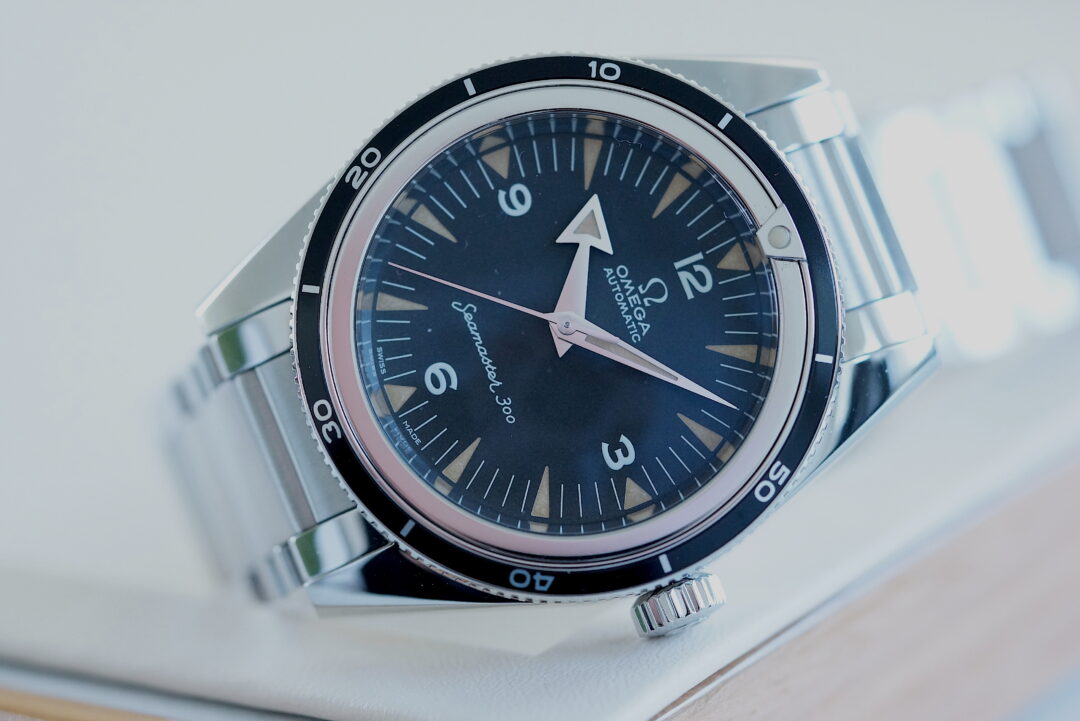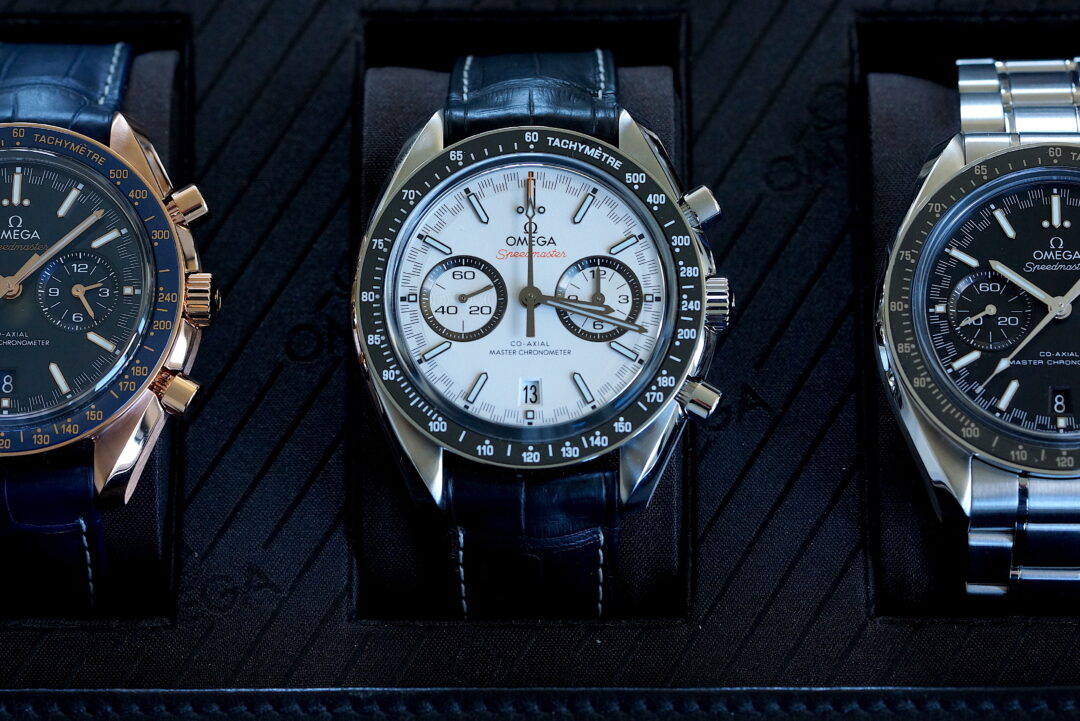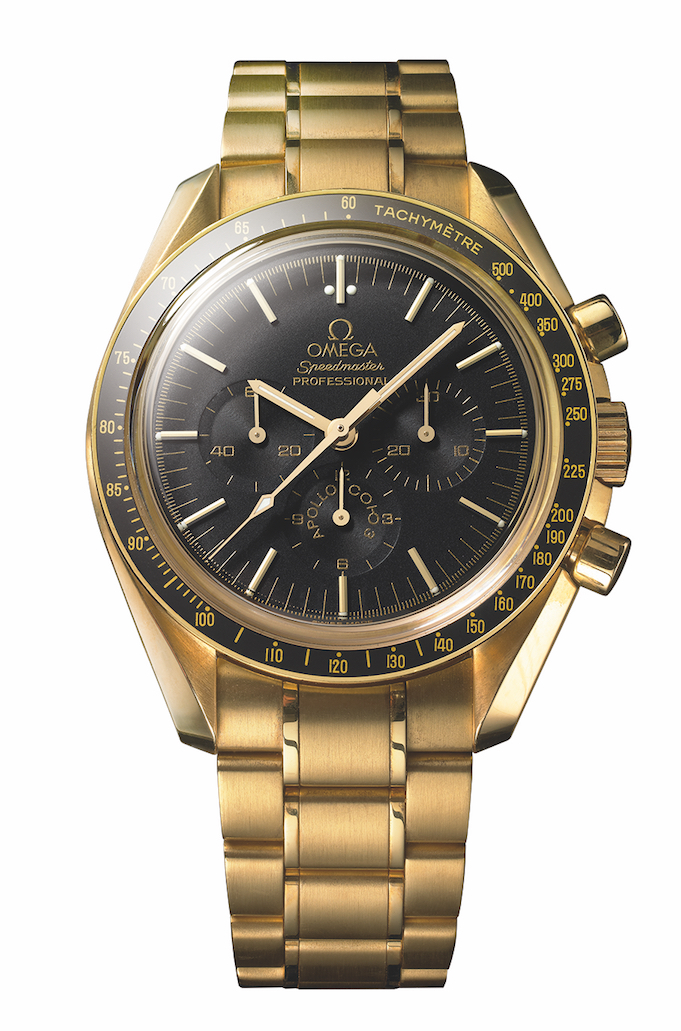1971
MARK III
OMEGA’s first self-winding chronograph
Launched in 1971, the Speedmaster Mark III, with its “pilot” case, was OMEGA’s first self- winding chronograph. The new calibre 1040 was a milestone for the brand and, in an advertisement from 1972, OMEGA famously stated, “After six landings on the moon, there was only one thing we could teach the Speedmaster. To wind itself”. Other interesting features include the cross shaped 60 minute chronograph hand and the unique 24-hour day/night indicator at 9 o’clock.
1972
ALASKA II (prototype)
Pursuing the perfect space watch
Continuing its secret project to build the perfect space watch for NASA, OMEGA returned with a new prototype, this time in a Moonwatch style that retained some of the original features of the Alaska I model, including the large red heat shield. As before, the white dial was also retained to better reflect the heat of the sun. Other updates included rocket shaped subdial hands for balance, luminous markers and radial numerals on the subdials, and a 0 – 60 numbered bezel.
1973
SPEEDSONIC
First electronic Speedmaster
This model is nicknamed the “lobster” due to the unusual shape of the bracelet which resembles the tail of a crustacean. With the growing desire for electronic watches, the Speedsonic was created with an innovative electromechanical movement to meet the demand for greater precision and reliability. Interestingly, the crown was deliberately made smaller in size to emphasize the reduced need to change time or date.
1973
SPEEDMASTER 125
Celebrating 125 years of OMEGA
This model was the world’s first automatic chronograph to receive an official Chronometer Certification. It was released to celebrate the founding of the OMEGA brand in 1848 and 2,000 pieces were produced to mark the occasion. The watch’s adventurous spirit was embraced by the Russian cosmonaut Vladimir Dzhanibekov who wore the Speedmaster 125 in 1978 when he spent a total of 145 days and 16 hours in space.
1975
APOLLO-SOYUZ
Celebrating the American-Soviet mission
In 1975, Russian cosmonauts and American astronauts wore Speedmasters during a historic meeting in space that signalled the beginning of the end of the Cold War. Made in a limited edition of 500 pieces to mark this famous American-Soviet space rendezvous, this watch was the first of the “Patch” watches. It has the mission patch at 12 o’clock in place of the OMEGA logo as well as longer markers on the dial and wider pushers.
1978
ALASKA III
Built for the Space Shuttle
When OMEGA began work on the “Alaska III” project, its aim was to adapt the classic Moonwatch to include anti-reflective surfaces and an easy-to-read dial. The result included a brushed stainless steel case and large radial numerals on the subdials. A first batch of 56 pieces was delivered to NASA and they used them on board the Space Shuttle in the 1980s. A second batch soon followed.
1979
ALASKA IV
Quartz prototype for NASA
When the Speedmaster briefly went digital, this prototype was created for the astronauts at NASA based on the commercial models. The functions were still the same but it also included a BETA light system as an innovative way to illuminate the display without using a typical lightbulb. 12 pieces were sent to NASA astronauts who tested the watch in training and on the Space Shuttle. Ultimately, they chose not to adopt the watch.
1980
APOLLO 11
OMEGA’s first sapphire crystal caseback
Launched to celebrate the 1969 Apollo 11 mission in which the Speedmaster became the first watch worn on the moon, this yellow gold model was the first to use the 861L calibre and to have a glazed display back with sapphire crystal. Produced in a very small numbered series of around 300 pieces, the L following the calibre 861 indicated that the calibre was the “Luxury” version with a higher level of decoration than was normally afforded.
1983
BICOLOR
First bicolor
Bringing a two-tone style to the Speedmaster’s iconic design for the first time, this bicolor model was made using a steel case with a golden dial, silvered subdials and a bracelet made from steel and 14K gold. The exact number produced is unknown but very few are known to still exist.
1985
“SPEEDYMOON”
First Speedmaster Moonphase
Twenty years after the Speedmaster began preparing to go to the moon, the moon came to the Speedmaster. Known as the “Speedymoon”, this watch was produced in a series of 1,300 pieces and features a Moonphase complication with a painted moon and stars. It was the Speedmaster’s first Moonphase model and, on some rare Speedymoon models, a face is also painted on the moon.
1987
SPEEDMASTER AUTOMATIC
The “Holy Grail” for collectors
This was the first Speedmaster that combined an automatic movement with a Moonwatch case. OMEGA only produced the watch during two years. For collectors, finding an original piece can become an obsession full of disappointment, joy and despair – hence its “Holy Grail” nickname. In design, the case is slightly thicker to accommodate the automatic movement and the buttons and crown are closer fitting than the usual Moonwatch.
1987
ITALY
Made especially for Italy
Limited to 500 pieces, this timepiece was created for the Italian market. It featured a black dial with golden subdials, a yellow gold bezel and yellow gold-plated crown and pushers. Interestingly, the Speedmaster has a historical connection with Italy. The Seahorse medallion that features on the caseback of many Speedmaster and Seamaster models was in fact inspired by the Seahorse emblems found on the sides of gondolas in Venice, Italy.

